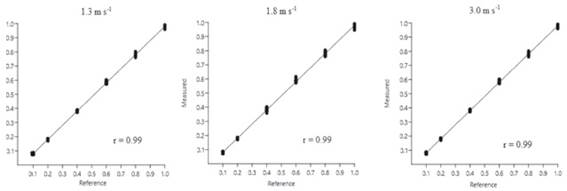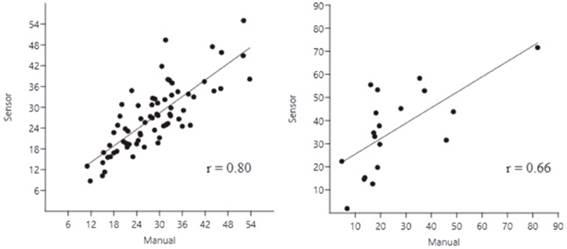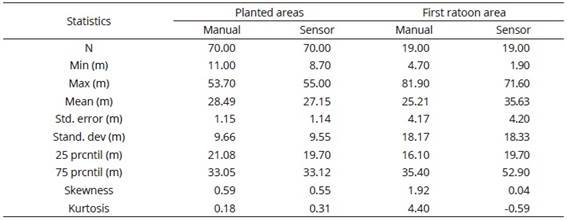ABSTRACT
Sugarcane is a very important crop in Brazil, used as food production and biofuel, providing 18% of the total primary energy in the country. An important requirement to high yield is a good uniformity in the sugarcane field, which is impaired due to row gaps that appear since the first year of sugarcane crop caused by planting failures, harvesting damages, machinery traffic, pests, diseases and others. The aim of this study is to develop a system based on a photoelectric sensor to scan the field, georeferencing gaps representing them as a map. A data logger integrates the data from the photoelectric sensors, an encoder and a Global Navigation Satellite System (GNSS) and measures the distance between plants, defining the gaps. Tests under controlled conditions, using regular obstacles simulating stalks, showed errors between 0.02 and 0.03 m under speeds varying from 1.3 to 3.0 m s-1 and obstacles ranging from 0.1 to 1.0 m of gap. Results of tests performed at sugar cane rows were close to manual measurement. Field tests were performed using sampling plots of 6.0 x 6.0 m (four crop rows) along the area, on newly planted and on ratoon areas, showed a good relation with manual measurements. The raw data provides the length of the individual gaps or its local percentage and the interpolation among punctual gaps produces a map highlighting areas with low and high gap intensity as a useful tool in the sugarcane management for decision making for local or integral replanting.
Index terms:
Close range remote sensing; interpolation; photoelectric sensor; biofuel; field quality

 Thumbnail
Thumbnail
 Thumbnail
Thumbnail
 Thumbnail
Thumbnail
 Thumbnail
Thumbnail
 Thumbnail
Thumbnail
 Thumbnail
Thumbnail
 Thumbnail
Thumbnail
 Thumbnail
Thumbnail
 Thumbnail
Thumbnail











